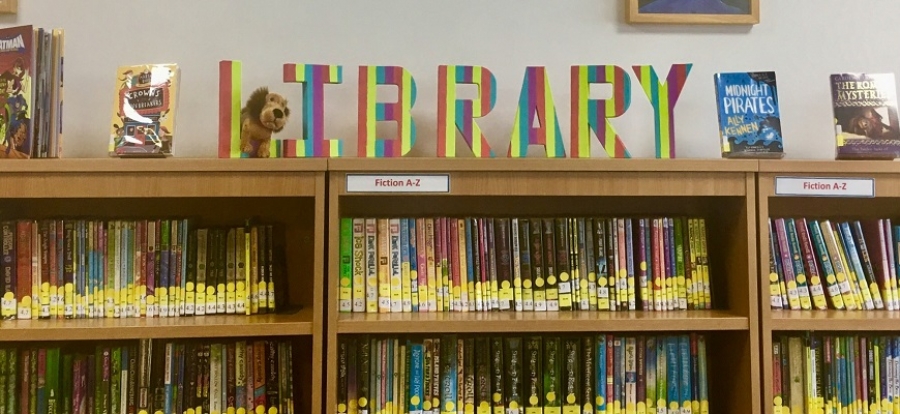1. Brilliant books!
The first priority in making your library the place to be is, without a doubt, ensuring that your stock is current and encompasses a wide choice of genres to cater to all tastes. Unfortunately, due to budgetary restraints far too many school libraries look well-stocked (because they have plenty of books on the shelves), but when you look closer you find that there are six copies of certain titles (because they have been used for a class read, possibly). Other books, meanwhile, may be in need of being pensioned off because they are tatty with dog-eared pages. Usually, authors such as Michael Morpurgo and Roald Dahl are well represented - it is comparatively easy to get cheap sets of their books - but newer, wonderful authors just don’t appear.
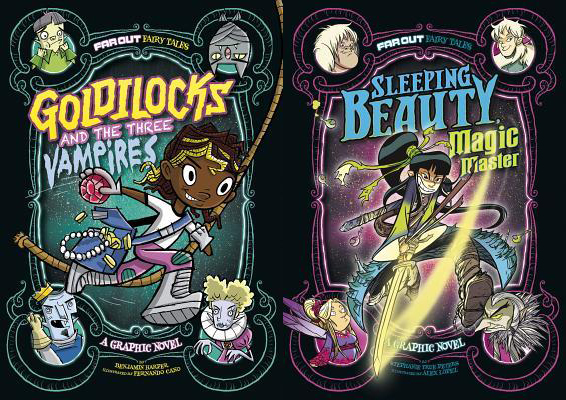 Image credit: Stone Arch Books
Image credit: Stone Arch Books
Updating your stock can create an immediate change in the attitude your students have to reading, I would ensure you have plenty of up-to-date fiction, as well as exciting factual books, eg Shackleton’s Journey or Girls Who Rocked the World. Graphic novels or comic books are often popular, and can entice even the most reluctant young person to pick them up for a read. Series like Hilo, Far Out Fairy Tales and Edgar Allan Poe graphic novels are superb, as are any of the Phoenix Comics titles.
2. Delightful displays!
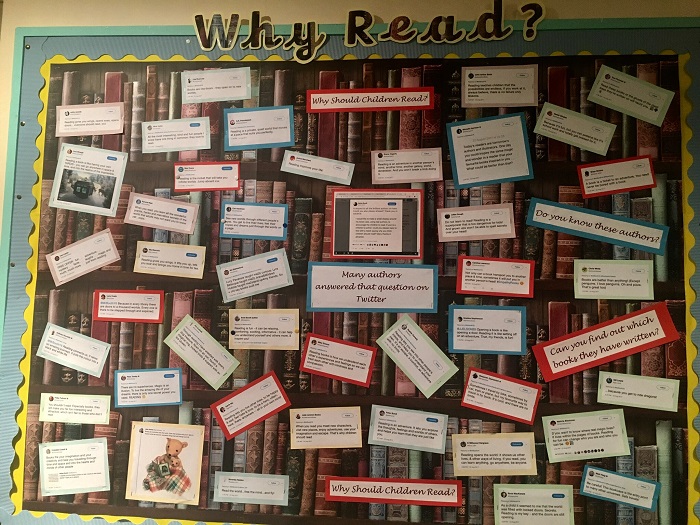 Courtesy of author
Courtesy of author
Exciting eye-catching displays are a must. Asking your teachers to let you know their favourite children’s books, and having a quote from them explaining their choices can work well. You would need to have all of the books in stock, naturally, but children love to read books that their teacher has recommended.
This could be used in a different way: Create posters with staff holding their favourite book open in front of their face and put them up around the school, then have a display in the library of ‘reveal’ photos. Displays that incorporate a social media element are cool. For example, using classtools.net you could ask students to create fake Facebook pages, Twitter streams or even text message conversations for book characters, and then use them to promote the books. This could be done instead of writing a classic book review, as many kids find writing these to be a little boring, so this updated method is a way to get some peer recommendation going.
 Image credit: ClassTools.net
Image credit: ClassTools.net
Having booklists made up on the lines of “Year 6 enjoyed these books and would recommend them to Year 3” would hopefully spark book talks between different classes. Having QR codes on the displays that lead you to video reviews would be the icing on the cake. For this, you would only need one cheap tablet in the library that pupils can use to view the videos. The tablet can double up as a portable listening station, too, for exploring audiobooks. Sometimes, there’s nothing nicer than having a story read to you.
Day 2 of our April School Library Month Challenge, let’s spread awareness about Autism! Use the QR code to read “Stories from the Spectrum” from the Autism Society. #WorldAutismAwarenessDay #slm18 pic.twitter.com/2czTMX3GN5
— Sarah Letts (@letts_read) April 2, 2018
Incorporate elements used in bookshops, too. Tightly-packed shelves indicate you have lots of choice but can make it difficult for browsers to find hidden gems. Many bookshops have short book reviews attached to their shelves from staff, and this could easily be replicated in your library using cards and bluetack. Reviews can be from the students or teachers, and should be changed regularly. Choose a particular genre to promote each month: January could be vampire month, February romance (of course!), March could be new beginnings. This can help break students out of their genre boundaries. I’m sure we have all encountered young people that will only read Wimpy Kid books because “everything else is just boring, Miss!”
3. Fantastic furnishings!
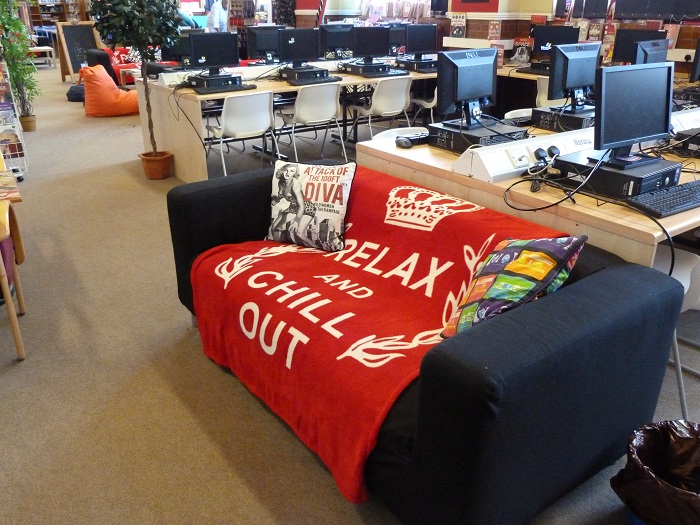 Courtesy of author
Courtesy of author
Comfy seating or beanbags to curl up on encourage kids to linger and browse, but these can be expensive. A similar effect could be created with a pile of cushions that they can throw themselves down on. Personally, I would like to have a couple of snuggly throws nearby too - how relaxing is it to wrap up in a blanket and sink into a book?
Effective clear signage to allow students to find things quickly is also very important. Most young people develop short attention spans due to the many distractions they have at home, so you want to make finding a good book as easy as possible. The seating and other furniture allows you to create a welcoming atmosphere that is unlike a classroom; more a place to reflect and relax.
4. Trendy technology
If you can bring some technology into the library space it can add to the ambiance and make the environment seem more up-to-date. This could be as simple as having a digital photo frame playing the front covers of your new stock, or showing books that fit into your monthly genre theme. This simple idea brings movement into the library, and screens do tend to demand attention from young people!
If you have a full-size screen or a projector screen available, you can open up endless possibilities for book promotion. Show book trailers to whet kids’ appetites. If you haven’t heard of book trailers before, they are short snatches of video produced to promote books usually made by publishers or authors. I have a Pinterest page with a collection of these trailers, please feel free to plunder: www.pinterest.co.uk/libwithattitude/book-trailersvideos
Good trailers can also be found on the World Book Day site: www.worldbookday.com/wbdtv
For older students, promote BookTubers (YouTubers that talk about books), because reading suggestions will be better received from a similarly-aged peer than from adults. There is a huge, enthusiastic community of book-lovers on YouTube, and they recommend books in straightforward reviews, do monthly reading roundups, and even film book-unboxings! Even if you do not use devices in the library, displaying a library app recommendation of the week shows that you are not just focusing on paper books, but are encouraging reading from any format.
5. Enthusiastic engagement
Regular promotions and events in the library are very effective. Author events are literally worth their weight in gold for the excitement they engender. If you aren’t able to have many authors in, there are a few online sites that allow you to take part in live author events.
Scottish Book Trust Authors Live: www.scottishbooktrust.com/authors-live
Puffin Virtually Live: www.puffinvirtuallylive.co.uk
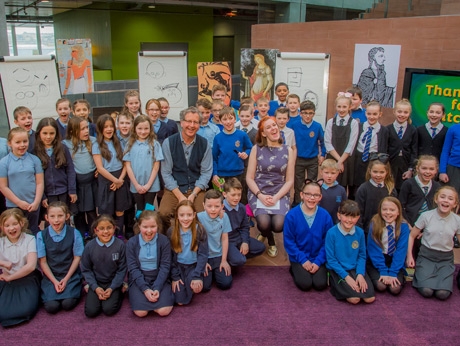 Image credit: The Scottish Book Trust
Image credit: The Scottish Book Trust
Joining in a live broadcast from one of these sites with a group in the library is a wonderful way to give your pupils the chance to see an author, and you can often pose questions via Twitter and other social media platforms. Many authors are happy to Skype with schools too, which can be much cheaper than paying travel fees!
@EmerStamp joined my class for a Q&A about Pig via @Skype this morning & she was BRILLIANT! #teamenglish @PrimaryIdeas #PrimaryRocks #books pic.twitter.com/wMZCJ6E0Oj
— Jonny Cartwright (@MrCartwright26) May 4, 2017
Team up with your local public library, too. They often have special library cards for schools; these will allow you to borrow more than an individual limit of books. You could use this to supplement the materials you already have on particular curriculum topics. Plus, you may find one of the public library staff would be willing to come in and talk to pupils about reading, or maybe even run some joint promotions. An obvious crossover is the Summer Reading Challenge, which is this year being run on the theme of Mischief Makers. The booklists produced each year are great for getting book suggestions, and this year’s selection for older readers is particularly good.
Some of the @56Narwhals taking some time to work on their chess strategies during their school library visit today. pic.twitter.com/lDHvwKs4hO
— Merrylands East (@merrylandseast) April 5, 2018
Encourage teachers to bring classes into the library for topic lessons or discussion sessions, and ask them to suggest new materials they’d like to see. The old idea of a library being a quiet space is very out-of-date now. These are often vibrant information and relaxation hubs, with some libraries incorporating makerspaces and even hosting music events. In the past, I have had classical music playing quietly in the library outside of lesson times. This really helps create a calm atmosphere, one conducive to learning and reading when there is not an event going on
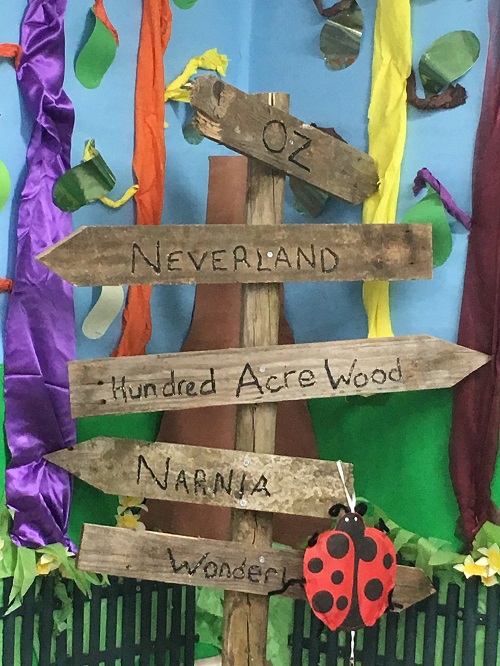
Image courtesy of author
School libraries are becoming worryingly scarce, so if you have one, please celebrate it and promote it. After all, if it is not used, it is more likely to be lost.
![]() Looking for resources to support your teaching online? Check out our unique list of the best free online resources on the independent review platform EdTech Impact.
Looking for resources to support your teaching online? Check out our unique list of the best free online resources on the independent review platform EdTech Impact.


